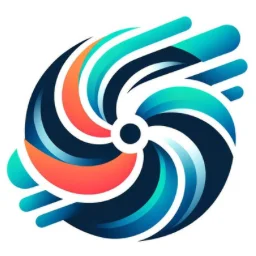The Best Digital Calendars for 2024: Stay Organized and Productive
Staying organized can be a challenge, especially in our fast-paced, digital world. Whether you're balancing work, school, or personal commitments, having a reliable digital calendar can make all the difference. In this guide, we will explore the best digital calendars for 2024, delving into their features, usability, and much more. If you're looking to streamline your schedule and maximize productivity, keep reading to find the perfect calendar app for you.
Top Features to Look for in a Digital Calendar
When choosing a digital calendar, several key features can significantly enhance your productivity:
User-friendly interface: A well-designed interface helps you navigate and manage your schedule effortlessly. Look for calendars with intuitive layouts and clear visual cues.
Synchronization across devices: Ensure your calendar app syncs seamlessly across all your devices—whether it's your phone, tablet, or desktop. This way, you'll always have your updated schedule at hand.
Customizable views (daily, weekly, monthly): The ability to switch between different time views can provide a better perspective of your tasks and events. Customizable views let you choose the format that best suits your planning needs.
Notification and reminder settings: Timely notifications and reminders can prevent missed appointments and deadlines. Opt for calendars that offer flexible settings for these alerts.
Integration with other apps (email, task managers): The best calendar apps integrate with tools you use daily, such as email clients and task management apps. This integration consolidates your workflow and improves efficiency.
Offline access: Ensure that your calendar is accessible even without an internet connection. Offline access ensures that you can view your schedule on-the-go without disruptions.
Comparison of the Best Digital Calendars for 2024
Google Calendar
Key features: Google Calendar stands out with its seamless integration with other Google Workspace apps, event color-coding, and the ability to create multiple calendars.
Pros and cons:
- Pros: Highly integrative, user-friendly, free to use.
- Cons: Limited advanced features in the free version, dependent on internet connectivity for full functionality.
Best use cases: Ideal for users deep in the Google ecosystem, professionals needing collaborative features, and those preferring a straightforward interface.
Microsoft Outlook Calendar
Key features: Microsoft Outlook Calendar offers sophisticated event management, integration with Microsoft Office suite, and extensive reminder options.
Pros and cons:
- Pros: Excellent integration with email and other Microsoft tools, robust customization, enterprise-level security.
- Cons: Can be complex for beginners, requires Office 365 subscription for full features.
Best use cases: Best suited for corporate environments, Microsoft Office users, and individuals looking for detailed task management.
Apple Calendar
Key features: Exclusively designed for Apple devices, it offers seamless integration with iCloud, Siri support, and location-based alerts.
Pros and cons:
- Pros: Smooth integration across Apple devices, intuitive interface, good privacy features.
- Cons: Limited to Apple's ecosystem, fewer integrations with non-Apple apps.
Best use cases: Perfect for dedicated Apple users who want superior synchronization and ease of use within the Apple ecosystem.
Fantastical
Key features: Fantastical is known for its natural language event creation, calendar sets, and beautifully designed interface.
Pros and cons:
- Pros: Highly intuitive, excellent interface design, powerful natural language parsing.
- Cons: Premium pricing for full features, initially requires time to learn.
Best use cases: Ideal for power users seeking an advanced calendar with extensive features and easy event creation.
Any.do
Key features: Combining a task manager and calendar in one app, Any.do stands out for its task-driven approach and smart scheduling capabilities.
Pros and cons:
- Pros: Integrated task management, simple interface, available on multiple platforms.
- Cons: Limited free version, some features locked behind a paywall.
Best use cases: Suited for individuals who need both task management and scheduling integration in a single platform.
How to Choose the Right Digital Calendar for Your Needs
Selecting the right digital calendar depends on several factors:
Identify your primary use (work, personal, academic): Consider what you'll use the calendar for—professional appointments, personal schedules, or academic deadlines. This will guide your choice.
Consider compatibility with your devices: Ensure the calendar app you choose works seamlessly across all devices you use, be it Android, iOS, macOS, or Windows.
Assess integration with other tools and apps you use: Determine if the calendar integrates well with your existing suite of tools, such as email, project management apps, and virtual assistants.
Determine importance of customization and user interface: If you prefer a high degree of customization, look for calendars offering robust options to tailor the interface to your liking.
Factor in cost (free vs. premium features): Evaluate whether the benefits of premium features justify the cost, or if a free version meets your needs.
Tips for Maximizing Productivity with Digital Calendars
Boost your productivity with these actionable tips:
Set clear and realistic goals: Define what you want to achieve each day, week, or month. Clear goals keep you focused and motivated.
Use color-coding to categorize tasks and events: Color-coding helps visually differentiate between work-related and personal events, making your calendar easier to read.
Enable reminders and notifications: Set up reminders for crucial tasks and events to ensure you never miss important deadlines.
Regularly update and review your calendar: Make it a habit to review and update your calendar regularly, keeping your schedule accurate and up-to-date.
Utilize advanced features like task lists and recurring events: Take advantage of built-in features like to-do lists and automated scheduling of recurring events to simplify your planning.
Future Trends in Digital Calendars
Digital calendars continue to evolve with technological advancements. Expect these emerging trends to shape the future:
AI and machine learning integrations: Future calendars will likely feature enhanced AI capabilities to predict and suggest schedules based on usage patterns.
Enhanced collaboration features: Improved tools for sharing and collaborating on schedules will streamline teamwork and project management.
Voice command functionality: Voice-activated controls will become more prevalent, allowing hands-free management of your calendar.
Improved user interfaces: Expect more adaptive and intuitive interfaces designed to enhance user experience.
Increased focus on privacy and security: As data security becomes ever more critical, calendar apps will incorporate stronger privacy measures to protect your information.
Conclusion
Choosing the best digital calendar for 2024 depends on your specific needs and preferences. By understanding the key features and comparing top options, you can find a tool that will help you stay organized and productive. Don't wait to streamline your schedule and boost your productivity—explore and choose the right digital calendar today!
Whether you're using it for work, managing personal commitments, or juggling academic responsibilities, the right digital calendar can make all the difference. Start exploring the available options, take advantage of trials and free versions, and find the best fit for you. Stay productive, stay organized, and make 2024 your most efficient year yet!



